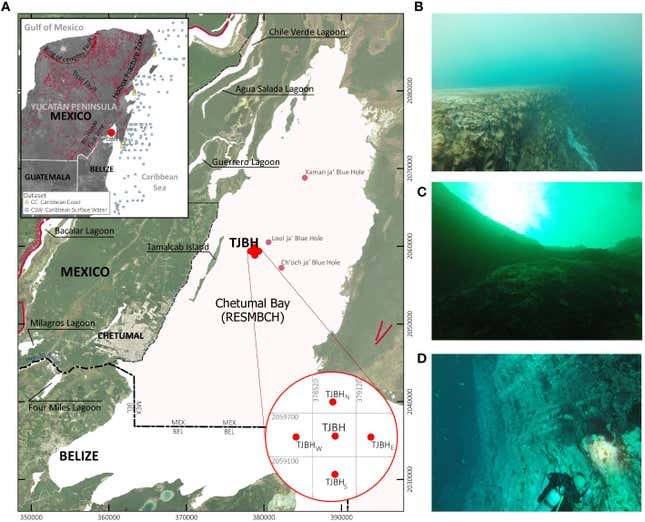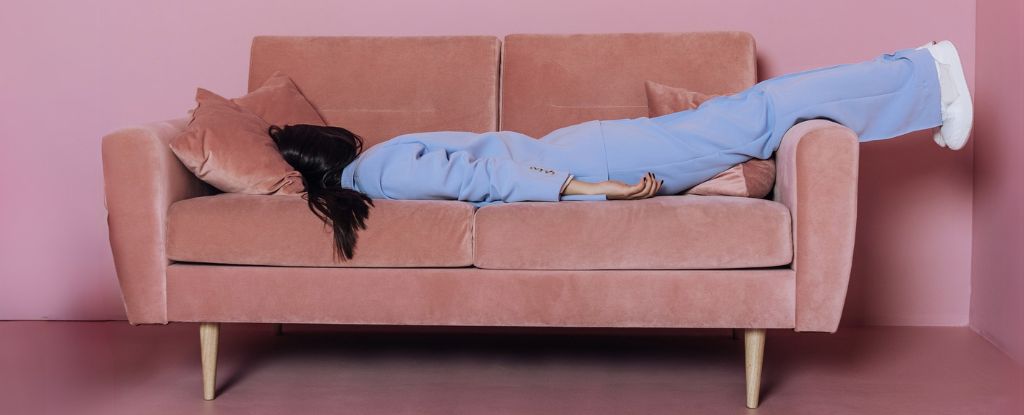ARTICLE AD
Researchers have found a blue hole they say is the deepest in the world—and they’ve yet to find where it bottoms out. The formation is the Taam Ja’ Blue Hole in Mexico’s Chetumal Bay, and it has so far been measured to 1,378 feet deep, or 420 meters below sea level.
Studio Thought ‘It’s Too Funny, And There’s Too Much Jennifer Tilly’
Blue holes are huge underwater sinkholes that appear on the seafloor when the limestone bedrock collapses. Some of the most famous blue holes are off Central America, especially Belize’s Great Blue Hole. Taam Ja’ is near the border of Mexico and Belize, off of Mexico’s Tamalcab Island and close to several other blue holes in Chetumal Bay. Measurements of the hole’s depth and how current circulates through it were published this week in Frontiers in Marine Science.
Taam Ja’ usurps the South China Sea’s Dragon Hole (also called the Sansha Yongle Blue Hole) as the deepest known blue hole. The Dragon Hole is about 990 feet deep, surpassing the third-deepest blue hole, Dean’s Blue Hole, by over 300 feet. The Taam Ja’ Blue Hole is more than twice as deep as Dean’s Blue Hole.

In December 2023, the team measured the sinkhole using a CTD (conductivity, temperature, and depth) profiler, a suite of electronic instruments that could characterize multiple components of the sinkhole. Comparing hydrographic data from the sinkhole with water layers in other reef lagoons, estuaries, and barrier reefs in Central America and the Caribbean led the team to conclude that “potential subterranean connections” may exist in the hole’s depths.
The CTD also revealed an increase of water temperature and salinity in the hole around 1,312 feet (400 meters) below sea level. The warm water may be related to volcanic or tectonic processes or geothermal activity at depth, the scientists concluded.
The researchers emphasized that the hole may be much deeper than their recent measurement, based on the structure of inland limestone cave systems. The team specifically referenced Krubera-Voronya, the deepest-known cave, which is 7,188 feet (2,191 meters) deep.

“This evinces the needs of continuous exploration of these karst geological structures, their intricate geomorphology, and the development of cave branches,” the study authors wrote. “Delving into the underwater spatial geomorphology of TJBH, the focus is on deciphering its maximum depth and the possibilities of forming part of an underwater intricate and potentially interconnected system of caves and tunnels.”
The researchers did not outline specific plans to remeasure Taam Ja’, but their investigation of its depth was only stopped by technological limitations. They outlined that future investigations of the hole “should incorporate advanced underwater navigation technologies” to better explore the mysterious—and hitherto unknown—depth of the eerie hole.

 8 months ago
58
8 months ago
58 

